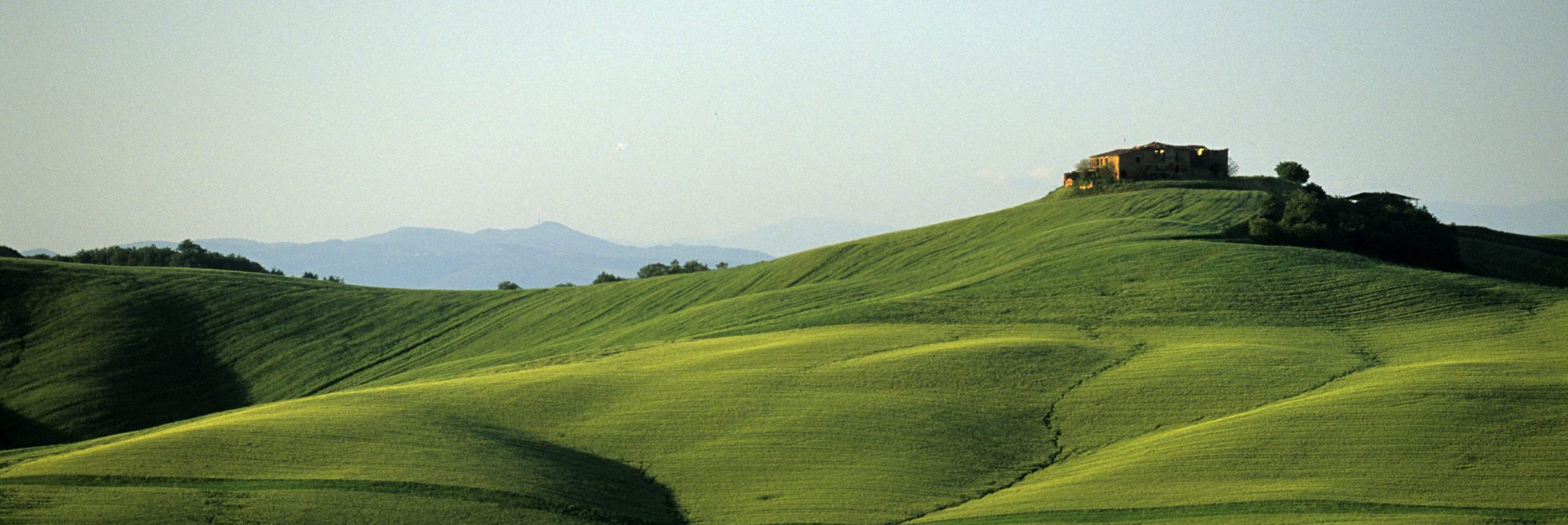Merse Valley Grand Tour
The Merse Valley Grand Tour is a fully signposted cycling tour itinerary which over a length of 173km with 3100m d+ that will allow you to discover Tuscany’s authentic and precious heart. The medieval villages of Chiusdino, Monticiano, Murlo, Sovicille, Casole d’Elsa and Radicondoli are man-made tourist attractions, where people live their everyday life alongside the rocks as perfectly integrated islands in an atmosphere which scrupulously preserves something ancient and genuine.
Today this fascinating area knows only boundless peace and offers magnificent routes to all curious cycle tourists who want to ride in search of little secrets and great discoveries.
90% of the itinerary is on secondary roads with low levels of traffic for one or more days of pure cycling pleasure, spreading over a large area that reaches the southern foothills of the Elsa and Cecina valleys from the heart of Montagnola Senese, rolling south to the Ombrone Valley, passing through the northern part of Maremma and then running through the Crete Senesi countryside, a spectacular sea of undulating, rolling hills that accompanies us to the gates of Siena.
Exploring the typically hilly Merse Valley, characterized by an amazing variety of natural environments, by bike is the best way to appreciate the natural and artistic treasures that this quiet and beautiful land can offer.
Crossed areas
The Val di Merse is the breath of the Terre di Siena, it is sap, it is rest, rest. It is Mediterranean and yellow scrub of brooms, bed of rivers, sometimes torrential at times placid, kingdom of wild and free animals.
In the woods, small villages that have stood still in time, that have not allowed modernity. In the green the treasures of water: remains of mills that in the Middle Ages made the economy of this land, thermal waters where centuries of generations and peoples have bathed, places where they have left traces, even in the DNA of the inhabitants, mysterious civilizations like the Etruscan one, small Romanesque churches, ruined castles. Surprising architectures at these latitudes: stately villas and Italian gardens, cloisters of monasteries with oriental charm as illustrations of “the thousand and one nights”, walls of powerful abbeys that, still, in silence, dominate the territory and radiate mysticism, hermitages where legendary knights laid down their weapons and changed their lives leaving traces that appear to us full of symbology.
Expanse of colors that rest the eyes, sounds of water and silence, smell of earth and smell of salt in the breeze that comes from the sea not far away, taste of fruits of the forest.
Many have written about Siena and its harmonious beauty, in all times, and it is difficult to invent new words to describe its charm, especially if you are not poets. UNESCO declared it a World Heritage Site in 1995.
José Saramago, a Portuguese writer and Nobel Prize winner, was in love with the city and dedicated words that describe it with brushstrokes of deep emotion and passion.
“And here is Siena, the beloved, the city where my heart is truly pleased”. “The three hills on which it is built make it a city where there are no two equal roads, all contrary to submit to any geometry”. “This wonderful color, the color of the body browned by the sun, but that is also the color of the crust of the corn bread, this wonderful color goes from the stones to the road and to the roofs, softens the sunlight and erases the anxieties and fears from the face”.
“There can be nothing more beautiful than this city”. Piazza del Campo “a square inclined and curved like a shell, which the builders did not want to pave and remained so, as if it were a lap”.
“I look at the old palaces of Siena, ancient houses where I wish I could live one day, with a window of my own, overlooking the clay-colored roofs, the green shutters of the windows, as in the attempt to decipher where this secret comes from that Siena murmurs and that I will continue to hear, although I do not understand it, until the end of life”.
The outline of the towers of San Gimignano, on a sky of early summer at dusk, could be the iconic image of this land, but there is more and more to look for and find in Val d’Elsa, in addition to art jewels such as Colle Val d’Elsa, Monteriggioni and the famous San Gimignano.
Val d’Elsa is a simple, sweet and fragrant land of Vernaccia; it is a land of hard-working people, who have designed hills of olive trees and vineyards with their work and have given life, over the centuries and exploiting what nature offered, to paper mills, precious crystals and works of art; is the birthplace of a forerunner genius such as Arnolfo di Cambio, architect, sculptor and painter.
Val d’Elsa is a gift for those who are not content to travel to the surface. Moving away from the most popular corners, from the “postcard views”, you can find yourself in dreamy paths, in a sunny and open countryside, where the hills seem to lull you and the stone of farms, parishes and small villages welcomes you, invites you to a stop, asks you to take time, to take your time.
